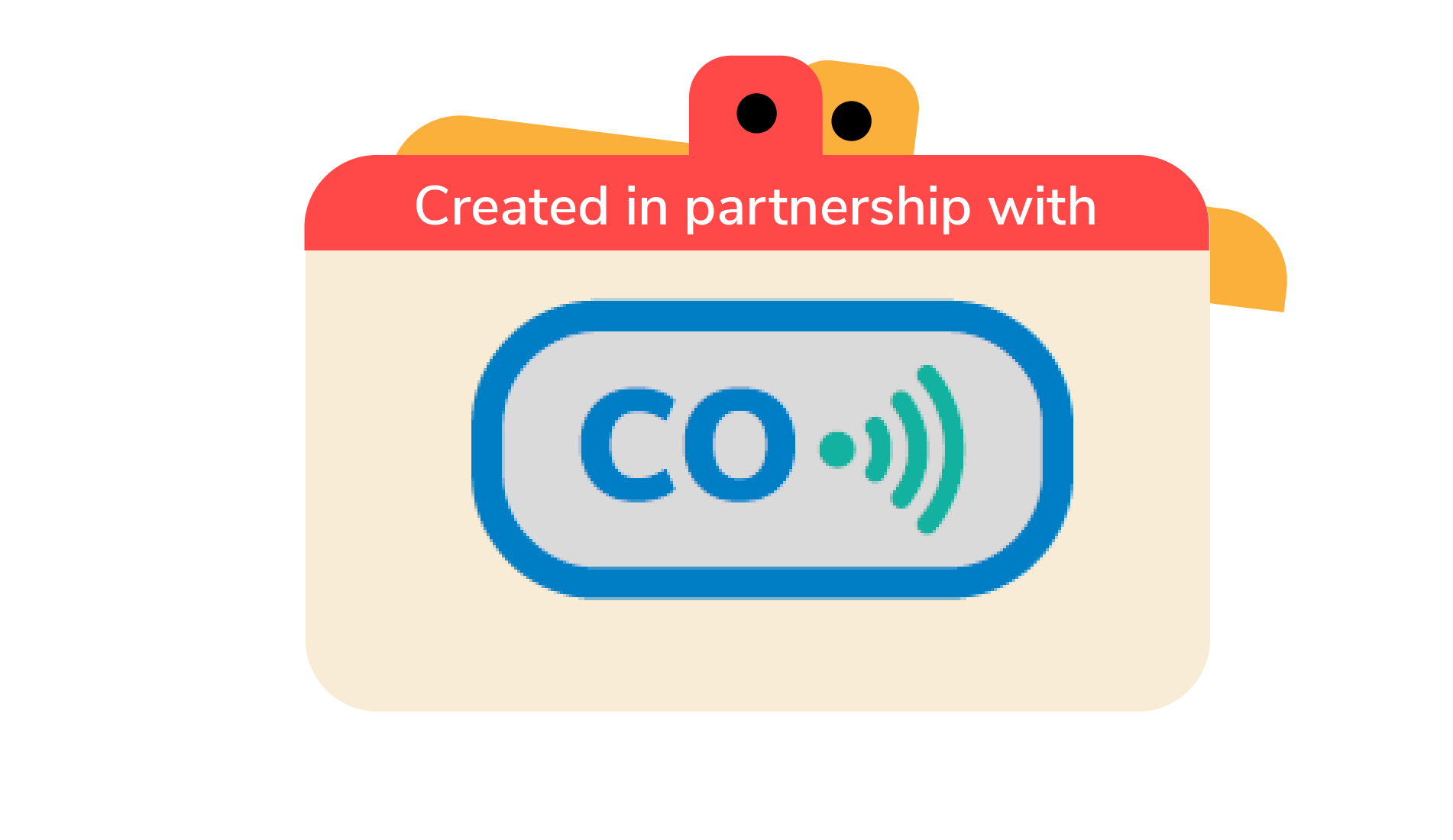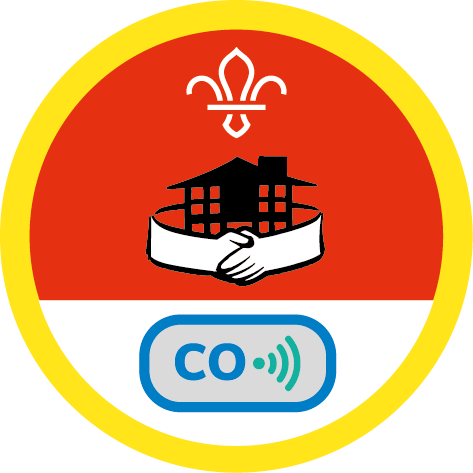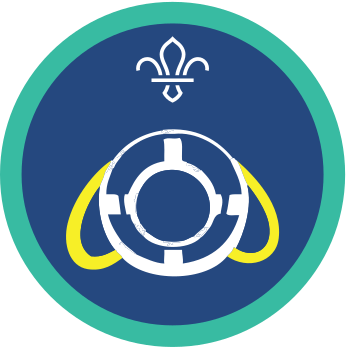
Solve a meeting place mystery
You’ll need
- Pens or pencils
- Scrap paper
- Printed clue cards
- Carbon monoxide alarm
Before you begin
- Use the safety checklist to help you plan and risk assess your activity. There's also more guidance to help you carry out your risk assessment, including examples. Don’t forget to make sure all young people and adults involved in the activity know how to take part safely.
- Make sure you’ll have enough adult helpers. You may need some parents and carers to help if you’re short on helpers.
Planning this activity
- This activity is designed to help young people recognise the signs of carbon monoxide poisoning and how they can keep themselves and their family safe. Make sure you check any gas-based appliances in your meeting place and in your equipment stores before beginning this activity to ensure everyone stays safe.
- Write out or print out the clue cards and place them around your meeting place. Some of the clue cards will need to have enough adult volunteers or young leaders to act out the clue. You may want some adult volunteers to be assigned to supervising the game, too.
Time to solve a mystery
- Gather everyone together in a circle. Remember not to mention the activity is about carbon monoxide – as that’s the answer to the game.
- The person leading the activity should explain that there’s something wrong with their meeting place and they need everyone to become detectives and help to solve the mystery.
- Everyone will need to work in their team to discover the clues hidden around the meeting place, as well as interview to some adult volunteers.
- Split everyone into small teams and give them pens and paper, so they can keep note of the clues. Hopefully they’ll be able to work out what is wrong.
Witness statements
Give each of these statements to an adult volunteer or young leader. If you don’t have enough adult volunteers, young leaders or parents and carers to play the roles, you can stick these up around your meeting place instead.
Witness 1:
It’s so strange. I arrived at our meeting early and it was so cold! Luckily, we’ve a gas fire, so I turned it up to maximum to warm up the place before everyone arrived. I’d brought a snack to have for dinner, but I only ate half of it and felt a bit sick, so I left it. Then I started getting a headache and feeling dizzy. I went outside and started to feel a bit better. Maybe I just wasn’t very hungry.
Witness 2:
I was the last to leave the meeting place last week. It all seemed normal, and all the doors and windows were closed. Hearing what Witness 1 said, I remember feeling a similar way as I locked up last week. I felt light-headed and slightly sick, too. I thought I was coming down with the flu or had eaten something that made me feel unwell. I’ve felt fine since then, so I forgot about it. Maybe it isn’t important – I just thought I’d mention it.
Witness 3:
Some local developers are renovating older buildings in town. Someone said that they saw them looking at our meeting place about a week ago. They even put a flyer through the letter box.
Witness 4:
I helped lock up last week and everything seemed fine. I’ve been trying to keep the cost of our heating bill down, so I turned down the heating. I also checked the batteries in the smoke alarm and carbon monoxide alarm. One needed replacing. I wrote myself a note to buy a new one and put it on our noticeboard.
Physical clues
Place these clues around your meeting place. If you don’t have the items described in the clues, we have included some illustrations in the PDF for you to print off.

Physical clue 1
There’s condensation (drops of water) on the inside of all the windows. All the windows were closed when you arrived to the meeting. There’s no sign of a break in.

Physical clue 2
The flame on the gas hob is yellow rather than the usual blue. It looks droopy and lazy.

Physical clue 3
There are black soot stains on the wall behind the gas fire.

Physical clue 4
The gas boiler needs a service. As you can see from the label, it’s missed its yearly service.
Solving the mystery
- Gather everyone back together when they’ve read all the clues.
- Ask everyone to write down what they think the source of the problem is and hand it to an adult volunteer. Hopefully everyone worked out that the problem was carbon monoxide.
- This is a great opportunity to facilitate a discussion about CO safety. Ask everyone to think about or name the clues that helped to identify CO as the culprit. They are:
- the symptoms of CO poisoning experienced by Leader 1 and Leader 2
- the batteries in the carbon monoxide alarm
- the condensation on the windows
- the yellow flames on the gas hob
- the soot stains on the wall behind the fire
- the gas boiler service being overdue.
- Discuss the six main symptoms of CO poisoning: headaches, nausea, dizziness, breathlessness, collapse, and loss of consciousness.
- Ask the group to think about potential sources of CO around their homes. Can anyone think of any?
- See if anyone knows how we can check for carbon monoxide leaks at home. Do they know when their appliances were last serviced and do they have a working CO alarm?
- Have a carbon monoxide alarm ready to show everyone, and demonstrate how to test if it is working properly. Remind everyone that this test should be done weekly.
Reflection
This activity was about being healthy and developing skills, so we can keep ourselves and other people safe. By understanding more about carbon monoxide and how it can be dangerous, what do you think you can do in future to protect yourself from carbon monoxide?
There are plenty of things around us that might seem scary or dangerous, but we just need to be careful with them. It’s just the same as wearing shin pads when we play football or a helmet on our bikes to stay safe.
What other things can we do to help stay safe? It could be sharing what we’ve learnt about carbon monoxide, being ready to spot the symptoms, checking our homes and getting a carbon monoxide monitor, or asking question about other things we want to learn how to use safely.
Safety
All activities must be safely managed. You must complete a thorough risk assessment and take appropriate steps to reduce risk. Use the safety checklist to help you plan and risk assess your activity. Always get approval for the activity, and have suitable supervision and an InTouch process.
- Fires and stoves
Make sure anyone using fires and stoves is doing so safely. Check that the equipment and area are suitable and have plenty of ventilation. Follow the gas safety guidance. Have a safe way to extinguish the fire in an emergency.
- Active games
The game area should be free of hazards. Explain the rules of the game clearly and have a clear way to communicate that the game must stop when needed. Take a look at our guidance on running active games safely.
Have plenty of adult volunteers and young leaders to support facilitation of this activity. To make it easier, you may need volunteers stood by every clue in order to read it to the young people.
- Make sure your space is suitable for everyone to move around safely.
- Some people may struggle with writing down, reading or remembering clues. They could be teamed up with a partner who can help them do this or support them by doing it for their team.
- Consider getting some props or using illustrations to show some of the things mentioned in the meeting place if your meeting place doesn’t have them.
All Scout activities should be inclusive and accessible.
You can visit our guidance on carbon monoxide safety. Remember to regularly check your meeting place and equipment to make sure it’s safe, such as by having a carbon monoxide alarm or a yearly service on gas equipment. You could also run some more of our activities to learn about the dangers of carbon monoxide.
Learning about dangerous things can sometimes be a little scary. Make sure to allow time for answering questions to help reassure everyone and make them feel safe.

